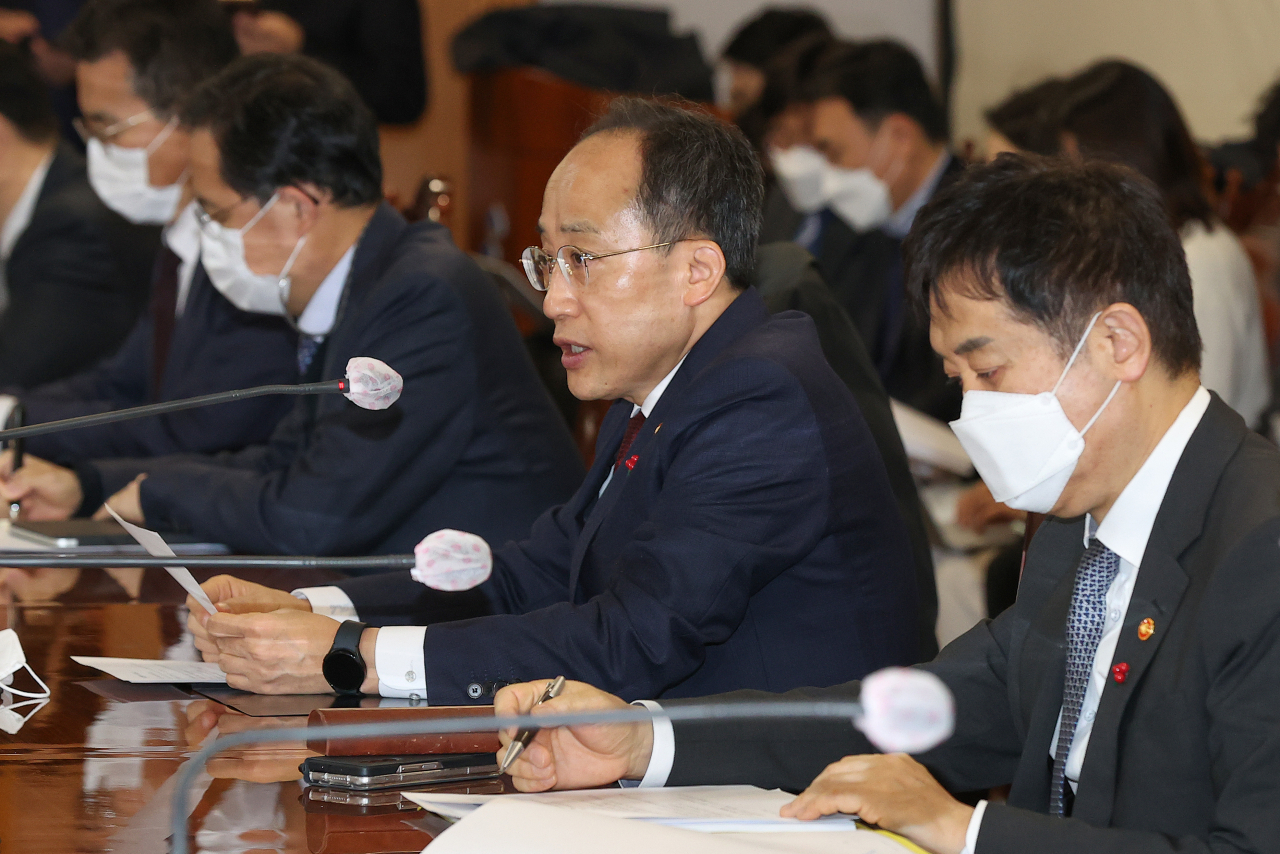
The US Federal Reserve decided to slow down its interest rate hike pace, raising the benchmark interest rates by a half-point. The Korea-US gap widened, which could lead to the outflow of foreign funds and volatility in currency exchange.
Upon concluding a two-day meeting of the Federal Open Market Committee, the US central bank raised its benchmark rate by 50 basis points to a 4.25 percent to 4.5 percent target range.
Expectations are growing over whether the central bank will take a step back on its monetary policy in line with the US or continue the steep hike to lessen the gap of differentials between the two countries. The next decision on Korea’s policy rate will be made on Jan. 13.
The Korean central bank slowed its pace of rate increase to 0.25 percentage point at its latest meeting held on Nov. 24, after two “big step” moves of a 0.5 percentage point increase in both July and October.
With the hike, the interest rate differential involving Korea and the US has widened from the previous 0.75 percentage point to 1.25 percentage points, prompting concerns of capital outflow and currency volatility.
The gap is the largest since October 2000, when the US interest rate was 1.5 percentage points higher than that of Korea's.
“Half a point could be interpreted as big or small. The Bank of Korea is not likely to change its path (of tightening the financial policy). As the inflation in Korea is yet to be fully controlled, the central bank will have to raise the interest rate again,” Jung Kyu-chul, a researcher at Korea Development Institute, said.
“Of course, as the two countries have different circumstances, Korea does not have to copy the actions of the US,” Jung said.
Though the Fed’s slower pace signals a green light for the global economy, financial authorities here have stressed the importance of market stability.
"It seems that the US slowed the pace of its rate hike as the US customer price index has fallen for five consecutive months," Finance Minister Choo Kyung-ho said Thursday in a meeting with top financial regulators after the FOMC announcement.
Choo viewed that the Korean economy is stabilizing on the back of expectations of a less aggressive US rate hike and other monetary policies, although uncertainty still remains high.
“With the rate hike widening the differentials in interest rates between Korea and the US, we will keep an eye on the local financial, foreign exchange markets and take timely measures to stabilize the market if volatility grows,” BOK’s Senior Deputy Gov. Lee Seung-heon said at a separate meeting.
Though the Fed has continued its rate hike, market expectations on monetary easing are growing. The pace has slowed down in the past six months compared to the previous four “giant step” moves, which involved a rate hike of 75 basis points, signaling the assessment that the US inflation has passed its peak.
“Major investments bank are expecting the Federal Reserve may not maintain its tightened monetary stance as (Fed chair Jerome) Powell’s press conference was interpreted to be less-hawkish,” the New York office of the Bank of Korea said after the announcement.
Bolstered by the slowdown, investors are keeping an eye out for a turning point.
“This signals that the tightened monetary policy stance is nearly over. However, the market will not show much response as it had already reflected much expectations on the ease. But still, the move signals slower pace of interest rate hike for next year,” Kim Hak-kyun, head of research at Shinyoung Securities, said.
As the battle against inflation is yet to be over, the rate is likely to increase within the next year with no reductions until 2024, as cautioned by the FOMC before.
The Fed gave an upward estimate for where the hikes will end, putting the “terminal rate” at 5.1 percent next year, higher than the projected figure from September. A pivot in the Fed’s monetary policy may come in 2024.
“Controlling inflation without triggering a recession is the Fed's scenario,” KB Securities strategist Kim Sang-hoon said. “The Fed is likely to freeze the rate in 2023, and eventually pull the rate down by 100 basis points until 2025.”





